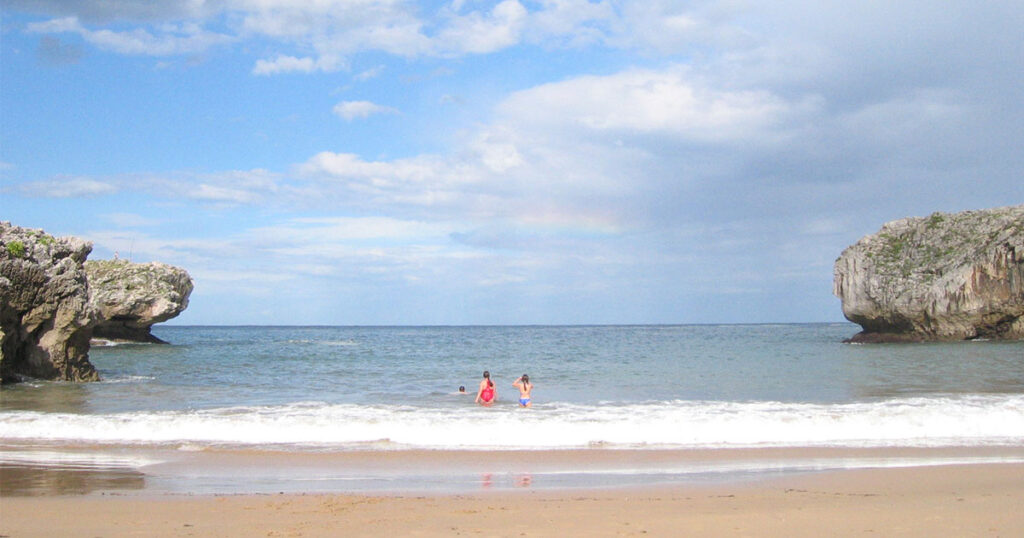
Driving the four kilometers from my house to Gijón in the late afternoon on the last day of April, a Thursday, I noticed nothing out of the ordinary: very few cars on the road, empty walking path beside it, bus hurtling past. Wind in the trees, gray clouds scudding across the sky. But then I saw a pair of people on the sidewalk edging the highway, climbing the hill. My antennae popped up. Two people, together, side-by-side! My first reaction was indignation. That’s not allowed! It isn’t done! Hasn’t been seen in weeks! Then I got closer, and I was delighted because it was not a couple flouting the rules but a mother and gangly child, permitted to be out together, as I remembered, since the previous Sunday’s loosening of restrictions.
Arriving at the beach area, I parked in the empty lot as usual. Walking toward the beach promenade, I noticed a woman with two children. Just past them, still on the promenade, where on my last trip to town a week earlier a police car had sat in stern warning to anyone thinking about setting a foot on the sand, were two more parents with children. On the beach below the promenade, empty all these past weeks except for seagulls, I saw a boy with a pail and his father on his knees beside him, a sight as strange as a whale. I stopped to gaze.
Until the previous Sunday, children had not been allowed out. No one had been, other than for necessary errands, such as the one I was running to the tobacco shop, the estanco, where I was going for a stamp and an envelope. It was just opposite the beach in a long line of otherwise shuttered businesses.
While I waited for my turn to go in, I watched what was happening on the beach. Not much. But yes, over there was a second child on the sand and a mother standing nearby, arms crossed; a boy with a ball; a girl on a bike on the promenade, wobbling along, her parent’s hand on the handlebar. A city dweller might after four days already be accustomed to children, but for me these sightings were extraordinary.
I realized that for two months, leaving my house once a week in the car to do the shopping, I had seen no children. No wonder that despite the sun and mild temperatures, the weather had seemed off, like a spring that brings out no flowers. Two days later, on the first Saturday of May, when adults were allowed to run, bike, or surf—to do any outside exercise they could do alone and get to without a car—I would see an astonishing number of people. It felt like a movie scene when dazed people emerge after great devastation to look around. First ones and twos, then ever-greater numbers, making crowds, throngs, multitudes of survivors. Thrilling, but not as thrilling as Thursday’s dozen children.
A soft rain was just beginning as I left the shop with my stamp and envelope. Right across the street, I saw a boy leaning into his masked father, and on the father’s other side a little girl, handing a folded umbrella to him. Nothing special about them. Just a parent and two kids opening an umbrella, a scene that but for the mask could have been from any wet afternoon, the light going gray as the rain came.
Seven o’clock was the new witching hour, when children were to be back inside. But pushed by the rain, parents were steering their children toward home 15 minutes early, past the benches wrapped with police tape to keep people off, past the shuttered shops, past the recycling bins with their lids propped open to save you from touching them.
Then the rain came a little harder. The show was over. Fifteen minutes I was owed—15 minutes of children, minutes that I would make up, not all at once on a special trip to town, but in bits and pieces, a minute picked up here, 10 seconds there, by paying more attention next time a child threw sand or kicked a football, begged for an ice cream cone or helped a father open an umbrella. That was my plan. Fifteen minutes, plus interest. Then I put my head down, and hurried through the rain to the car.

